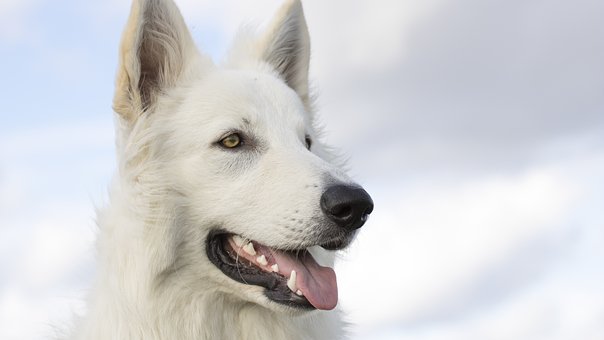1. Provide plenty of water and shade
Dehydration in dogs and cats is a real possibility during the summer. Our dogs get much thirstier than we do when they get hot. Signs of dehydration include dry gums and excessive drooling. Make sure your pet always has access to fresh, clean water inside the house and bring a bottle for your furry companion when going outside, just like you do for yourself. You might also switch to a wet dog food during the hotter months to increase fluid intake.
Keep your pet in the shade as often as possible. While dogs and cats like to sunbathe, direct sunlight can overheat them (especially dogs) and lead to heatstroke.
2.Know the signs
A dog's normal temperature is between 100° and 103°F, while a normal temperature in cats ranges from 100.4º to 102.5ºF. Anything higher than that means your pet’s in danger. Dogs and cats don’t sweat like we do. They drink water and pant to bring down their body temperature.
Watch for these possible symptoms of overheating:
- Heavy panting
- Dry or bright red gums
- Thick drool
- Vomiting
- Diarrhea
- Wobbly legs
If your pet shows signs of heat exhaustion, move them to a cool place, give them a drink of water, put a damp towel over their body, and get them to the vet asap. Don’t place your pet in cold water, that can put them into shock.
3.Never leave your pet in the car
Most pets love riding in cars. But they wouldn’t enjoy being stuck in it somewhere in the parking lot when it heats up to over 100 degrees. You may think leaving your pet in a car for a few minutes is no big deal. However, it can take less than 10 minutes to develop heat stroke in dogs and cats inside the hot vehicle.
Leaving your pets in cars not only dangerous to your pet, but it is also illegal in 16 states that have specific “hot car” laws. So, either take your pet with you or leave it at home. If you see a pet left alone in a car under dangerous condition, take action immediately - try searching for the owner asap or even call the police.
4. Apply sunscreen
Believe it or not, pets get sunburns too, especially those with short or light hair coat. And just like with people, it hurts and can even lead to skin cancer. If you are planning to spend a day out in the sun with your furry companion, apply sunscreens every 3-4 hours to the least hair-covered spots: bellies, ears, and nose. Use only sunscreens made specifically for pets. Your vet could advise on the product suitable for your pet fur kid.
5. Don’t shave your pet
You might think shaving your dog a cat for the summer is the best solution to overheating. But a pet's coat is naturally designed to keep it cool during the summer and warm in the winter. Feel free to trim the fur on your pet in the summer, but never shave. Be sure to leave at least a full inch of hair to protect your pet’s skin from sunburns. And don’t forget about your pet’s regular grooming schedule, no matter what season it is.
6. Mind your walking hours
If you have a dog, walk and exercise your pup only in the early morning and late evening. Never do it in the middle of the day. When outside, take breaks in the shade and have water available.
7. Keep your dog's paws cool
Pets heat and cool from the bottom up. If you’re out in the sun together, try to keep your pet off of hot surfaces like cement and asphalt. Not only can it burn paws, but it can also increase body temperature and lead to overheating. It’s also not a good idea to drive around with your dog in the back of a truck – the hot metal can burn paws quickly.






